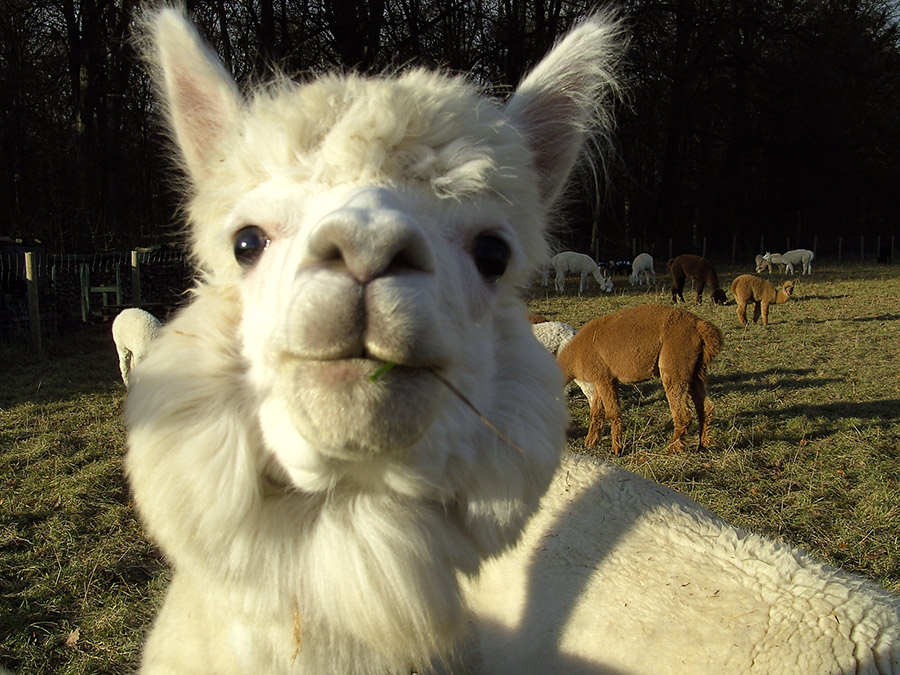Management Intensive Grazing (MIG)

What is Intensive Grazing and how do you do it?
By Daniel Linden, BS, Camelid Nutrition Graduate Student, Ohio State University, 2003
Management Intensive Grazing (MIG) is a wonderful concept. It was used in the 1950s to some success and has been used in New Zealand with very good success. The concept is that by intensifying the manual labor of a grazing system one can increase the animal stocking density by 20-30% and reduce cost by allowing animals to harvest their own forage instead of the farmer harvesting the forage for them.
MIG involves rotating animals through a series of paddocks that have optimal growth of forage in each pasture as the animals enter. This generally uses 8-9” tall grass that is in the growth stage and not in the flowering or bud stages. Once a plant has gone to flower it is too mature and too fibrous for good nutrition. The animals are allowed to graze the plants down to 2-3” and are then moved to the next pasture. Some systems allow crias or tuis (weanlings) to graze the new pasture first like a creep grazing.
The key to MIG is to have proper sized pastures that allow the grasses to regrow before the animals are put back in this pasture. This requires 3-4 weeks depending on the season. This also reduces some of the parasite burden because it removes the animals from pastures with new feces that will contain parasite eggs. It doesn't remove the problems totally but may reduce the problem.
The number of paddocks and the size depends on many things:
- How often you are going to move them? Sheep and cattle are moved every 3-7 days. Dairy cattle 2 times / day.
- How fast does you forage grow? Summer slump will slow down growth and reduce the speed that you can rotate them.
- Do you have rapidly maturing plants that go to seed before you can rotate the animals? If so, you need to mow the grass to keep it young enough for the animals to digest. Excess in spring and fall can be mowed and made into hay since there is so much of it.
Each paddock size will be determined by the lay of the land. Try to make each pasture a 1:1 or 1:2 size ration. A pasture that is 100 feet x 300 feet will not get good grazing in the back because the animals won't want to walk that far. Also, every paddock needs to have a water source that is easily accessible. Animals graze closer to water sources. If they walk a long distance to grass and water, they won't utilize the pasture well.
As far as what plants to use, this is a sticky situation. This depends on your soil conditions. Legumes are essential. Clovers and alfalfa are commonly used, but clovers do better in wet soil than alfalfa. Also keep the legume percentage below 25%. High legumes can cause bloat and weight problems. Grasses are easier; Timothy is up to you. I don't care for it because it is difficult to establish and keep alive. I know some people that won't have pasture or hay without it. That is up to you. Orchard grass is great if you get a new slower maturing variety. Kentucky bluegrass is hardy and just keeps coming back. Some people recommend fescues and rye grasses, but I do not. There are too many problems with these types of grasses that I feel it is better to be safe than sorry. Brome grass is nice for lots of growth. Avoid the Sudan grass crosses. They can produce prussic acid that is harmful.
Like this article? Become a RMLA Member today!


